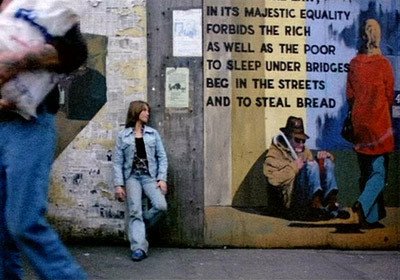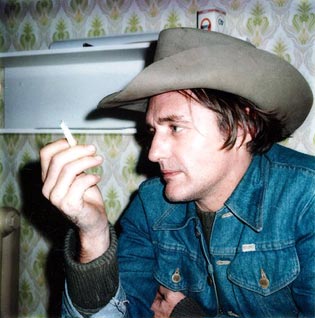This obviously wouldn’t be an appropriate time to revive my negative review of Hopper’s Colors in the Chicago Reader 22 years ago, which can easily be accessed by anyone who might be interested. But I’d like to reproduce a couple of short paragraphs from it about my favorite Hopper film, which I continue to cherish:
To make sure my memory wasn’t playing tricks on me, I recently took another look at Hopper’s previous film, Out of the Blue (1980). Here was proof, if any is needed, that a celebrated burnt-out case came back to establish himself as the legitimate American heir to the cinema of Nicholas Ray — a cinema of tortured lyricism and passionate rebellion that reached its fullest flower in the 50s, as if to match the action painting that was roughly contemporary with it. Hopper managed to remake Ray’s Rebel Without a Cause (the film in which Hopper made his acting debut) in terms of a working-class punk (Linda Manz), an androgynous heroine whose grim fate suggested an Americanized version of Robert Bresson’s Mouchette. Casting himself, moreover, as her dissolute father, Hopper gave himself a disturbing part that seemed to update his role as Billy in Easy Rider.
Originally hired to work on Out of the Blue solely as an actor, Hopper took over as director at the last minute. He fashioned an extraordinary movie with a minimum of time (a month of shooting, six weeks of editing) and money ($1.2 million, $780,000 of it reportedly Hopper’s own) that easily surpassed both Easy Rider (1969), and The Last Movie (1971) — his respectively overrated and underrated first two movies — as historical testimony and as aesthetic object. But very few people have ever heard of this late-blooming masterpiece, much less seen it. The fact that it belongs to that elephant graveyard of titles available on video doesn’t mean that it’s been validated by even the minimal cultural attention routinely given to every Sylvester Stallone release. [5/30/10]



